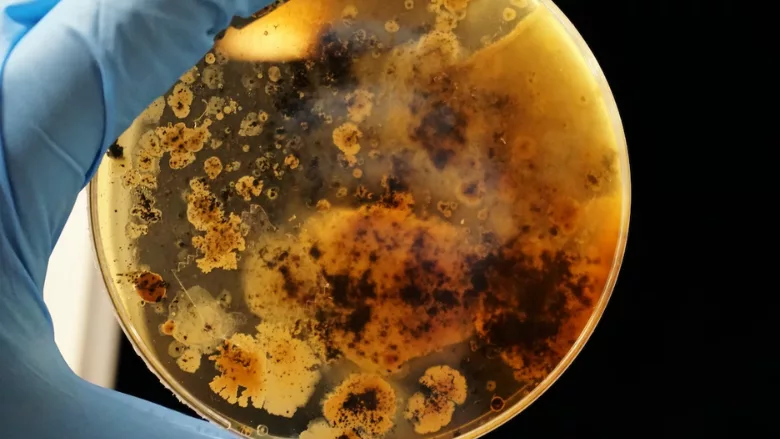Pseudomonas Biofilms Pose Food Safety Threat by Aiding Listeria Survival in Processing Environments

Image credit: CDC via Unsplash
Pseudomonas biofilms can aid the survival of Listeria monocytogenes cells even after disinfection, according to a recent study. Although Pseudomonas are often overlooked as a food safety hazard due to being associated with food spoilage rather than with human foodborne illnesses, the study’s findings suggest that the bacteria may pose a direct threat to food safety in the processing environment.
Pseudomonas are the most commonly found bacteria in food processing environments due to characteristics such as a high growth rate at low temperatures, a high tolerance of antimicrobial agents, and biofilm formation. The bacteria have been of special interest as colonizers in food processing environments, as a food spoilage organism, and as protectors of foodborne pathogens.
Previous research has demonstrated the possibility of surviving bacteria exposed to sub-lethal concentrations of disinfectants being able to co-select for both disinfectant- and antibiotic-resistant properties. Several studies also indicate that interspecies interactions in a biofilm could serve as an accelerator for horizontal gene transfer, as well as facilitate adaptation to environmental conditions and the subsequent decreased susceptibility to antimicrobials. It has been suggested that multi-species, Pseudomonas-dominated biofilms could host and shelter pathogens like L. monocyotogenes.
In the study, researchers from the Norwegian University of Science and Technology isolated Pseudomonas samples from cleaned and disinfected surfaces in a salmon processing facility. A total of 186 isolates were screened for biofilm formation at 12 °C, and were graded as strong, medium, or weak biofilm producers. A high variation in biofilm formation was observed, with 12 percent rated as strong, 29 percent as medium, and 27 percent as weak biofilm producers, as well as 29 percent not producing a detectable biofilm.
Next, selected isolates, in both planktonic (not in a biofilm) and biofilm states, were tested for resistance to a commonly used peracetic acid (PAA)-based disinfectant and the antibiotic florfenicol, which is frequently used in Norwegian aquaculture. The use of disinfectants comprising PAA and hydrogen peroxide has increased in recent years due to their efficacy and environmental friendliness; however, as disinfection in food processing facilities does not completely sterilize surfaces, low numbers of bacteria can remain after disinfection, allowing the most tolerant cells to proliferate.
Among the isolates tested for tolerance to the PAA-based disinfectant and the antibiotic, Pseudomonas showed higher tolerance to both the disinfectant and the antibiotic in comparison to other types of bacteria. Variations in the tolerance patterns between isolates were high, even in different isolates of the same species, indicating that antimicrobial tolerance was not necessarily a strain-specific property. Most isolates showed a much higher tolerance in the biofilm state than in the planktonic state.
In the multi-species biofilm experiment, the researchers observed that L. monocytogenes grew considerably less densely in co-culture with Pseudomonas as compared to L. monocytogenes monoculture in planktonic state. However, the biofilm’s growth over time indicated that L. monocytogenes has the potential to persist in multi-species biofilms, even if in lower numbers than its cohabitants.
Pseudomonas and L. monocytogenes monoculture biofilms, as well as the multi-species biofilm, were next tested against a PAA-based disinfectant. Although no viable cells could be detected immediately after disinfection, substantial regrowth after two, three, and four days could be observed in several specimens. While none of the single-species biofilms of L. monocytogenes survived the disinfection treatment, 15 of the 18 Pseudomonas biofilms and 13 of the 18 multi-species biofilms survived the treatment. L. monocytogenes survived in ten of the multi-species biofilms, supporting the hypothesis that the properties of Pseudomonas in biofilm formation and tolerance toward disinfectants also aid other pathogens like L. monocytogenes in surviving disinfection.
Looking for quick answers on food safety topics?
Try Ask FSM, our new smart AI search tool.
Ask FSM →









